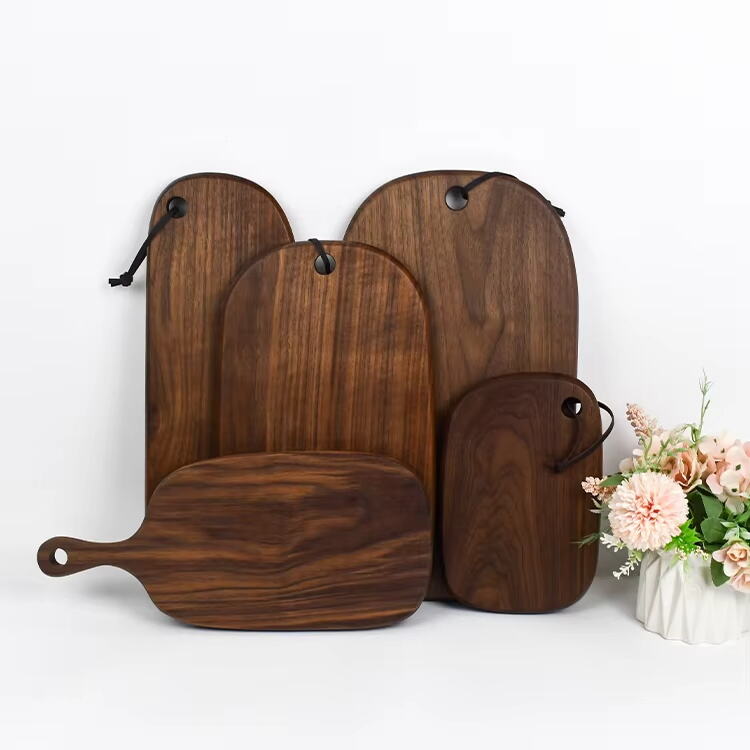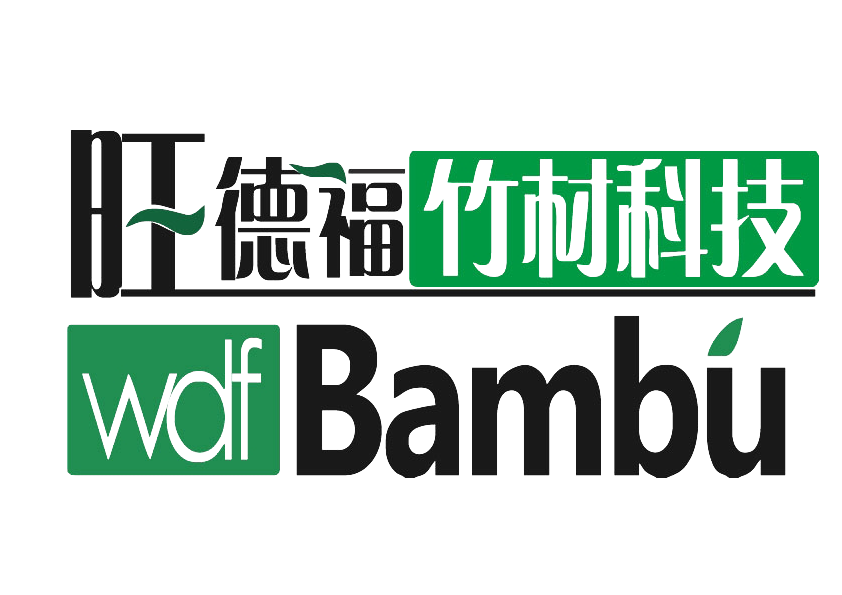Common Materials for Cutting Board Sets
Wood: Maple, Walnut, and Cherry Characteristics
For folks looking at wooden cutting boards, maple, walnut, and cherry stand out among the crowd because each brings something different to the table. Maple boards are pretty hard with tight grains, so they last longer without damaging knives too much. Plus, they don't absorb moisture or bacteria easily, making these boards safer for everyday kitchen use. Walnut offers a nice deep color that looks great on countertops, and since it's a bit softer than maple, it won't wear down blade edges quite so fast. Cherry wood comes in second place when talking about hardness but has this beautiful reddish brown color that gets even richer with age. Many cooks love how it looks in their kitchens. Both maple and cherry have natural defenses against germs growing on surfaces, which adds an extra layer of protection when preparing meals.
Research indicates that dense hardwoods stand out for their exceptional durability, even though they need ongoing attention such as applying oil and keeping them dry. The extra work pays off over time since these woods naturally form a rich patina that makes them look even better with age. Looking at prices, maple and walnut typically cost more than cherry wood, something many shoppers consider when deciding what fits their wallet best. Most people end up picking between different woods based on how much money they want to spend, what looks good to them personally, and whether they're ready for the maintenance involved in keeping certain types of wood looking great.
Bamboo: Sustainability and Hardness
People are starting to prefer bamboo cutting boards because they're better for the planet and work pretty well too. The thing about bamboo is it grows way faster compared to regular hardwoods, so we can harvest it without worrying too much about running out anytime soon. What makes these boards stand out is how dense the material is, creating a really tough surface that holds up against chopping and slicing. But there's a catch worth mentioning here. Some folks have noticed that really sharp knives tend to dull quicker when used on bamboo surfaces, so if keeping blades in top condition matters most, that's something to keep in mind. Still, even though bamboo is tough, it stays surprisingly light in hand, making these boards super convenient to move around and wash after meals.
Studies show bamboo cutting boards last just about as long as hardwood ones in busy kitchen environments. Give these boards some love by oiling them regularly, and they'll hold up against all that chopping action day after day without showing much damage at all. Bamboo has another bonus too – it doesn't soak up moisture or bacteria nearly as much as other materials do, which means cleaner surfaces between meals. Sure, bamboo gets praised for being green, but don't forget to check how it was actually made. Some manufacturers treat their bamboo products with chemicals during processing, so always read those labels carefully before making a purchase.
Plastic: Affordability and Hygiene Considerations
Plastic cutting boards are pretty affordable and generally considered clean enough for most home kitchens. The fact that they don't break the bank means plenty of people can afford one without much thought. Cleaning these boards is usually straightforward since most models go right into the dishwasher after use, making them pretty low maintenance overall. Plus, plastic doesn't soak up water like wood does, so there's less chance of germs hanging around or bad smells developing over time. This characteristic gives plastic an edge over alternatives like wooden cutting surfaces when it comes to keeping things sanitary between meals.
The numbers tell us plastic cutting boards dominate kitchen countertops for good reason. Their smooth surfaces don't hold onto bacteria like wooden ones do, making them popular among those concerned about food safety. Still worth remembering though, once those plastic boards start showing deep cuts and grooves from all that chopping, they become little traps for germs instead of keeping things clean. Most people keep using them until they're practically falling apart though, mainly because new ones cost so little and just take up minimal space in storage. That combination of cheap price tag and easy cleanup keeps plastic boards sitting on counters across America despite their flaws.
Factors Determining Cutting Board Durability
Material Density and Knife Resistance
How dense a cutting board material is makes all the difference when it comes to resisting cuts and scratches. Materials that pack more density, like maple wood, tend to last longer and show fewer knife marks, so they stay useful and look good even after years of kitchen action. Most people who work with these boards notice that knives actually wear down differently based on what kind of wood they're cutting on, and the denser woods definitely hold up better over time. Take maple and cherry woods for instance they've got this solid density that stands up pretty well against constant chopping without getting damaged much. The way a board resists those knife strikes really impacts how long it will last before needing replacement because of worn surfaces. When picking out a cutting board, going for something with decent density matters a lot if we want it to handle all those daily kitchen chores without falling apart.
Moisture Absorption and Warp Resistance
When it comes to cutting boards, moisture absorption remains one of the main culprits behind warping issues across different materials. Maple and cherry woods naturally stand up better against moisture, which means they're less likely to expand or warp after contact with water or other kitchen fluids. Kitchen owners know this well since these boards spend so much time near sinks and food prep areas. Studies have actually shown boards prone to moisture damage often show signs of wear sooner than others, making them less durable over time. Bamboo has become popular as an alternative material because it resists moisture expansion pretty effectively. For anyone looking to avoid warped cutting surfaces, choosing materials with built-in moisture resistance makes sense both practically and economically. These choices help maintain board integrity longer term, no matter what kind of cooking goes on in the space.

Wood vs. Bamboo vs. Plastic: Durability Showdown
Longevity of Hardwood Cutting Boards
Wooden cutting boards really stand out when it comes to lasting power if someone takes good care of them. Most folks find that their quality wooden boards stick around for years and sometimes even decades with proper maintenance. A common trick among kitchen enthusiasts is to regularly apply food grade mineral oil to the surface so the wood stays hydrated and doesn't crack over time. Take John Boos & Co for instance, they've been making top notch maple boards for ages and always stress how important ongoing maintenance is to get maximum lifespan from their products. Sure, wooden boards might cost more upfront compared to plastic options on the market, but think about it this way: because they don't break down easily and won't need replacing every few months, they actually save money in the long haul. The initial expense fades away once people start slicing vegetables, chopping herbs, and handling all sorts of kitchen tasks day after day without worrying about damaging the board.
Bambooâs Scratch-Prone Nature
Bamboo cutting boards have their green points and sure feel lighter in hand than wood or plastic options, but they just don't hold up as well against knife marks. The surface gets scratched pretty easily which ruins how it looks and creates problems for keeping things clean. Those deep gouges catch all sorts of grime and bacteria, making regular cleaning a real hassle and possibly putting food safety at risk too. A lot of folks who bought these boards end up complaining about how quickly they start looking worn out after only a few months of regular kitchen use. So even though bamboo is great for the environment, someone who wants something that lasts longer and stays sanitary might want to think twice before going this route.
Plasticâs Degradation Over Time
Plastic cutting boards seem handy at first glance but tend to break down after some time in service. The surface gets scratched up pretty quick during normal kitchen activity, creating those little grooves where food particles hide out and bacteria love to hang around. Cleaning becomes a real chore once this happens. Environmentally speaking, these plastic boards aren't great either since most people struggle to recycle them properly and improper disposal just adds to landfill problems. Home cooks should keep an eye on their cutting boards for telltale signs like deep gouges or weird coloring changes that signal it's time for a new one. Sure, plastic boards start off cheap and simple to wipe down, but all those hidden costs pile up over years of use unless someone actually takes responsibility for replacing worn ones or finding proper disposal methods.
Oil Treatment for Wooden Boards
Wooden cutting boards need regular oiling to stay in good shape over time. When we apply oil consistently, it stops the wood from getting too dry and eventually cracking, which means our boards last longer than they would otherwise. Most folks find monthly treatments work well enough, though some might need to do it more often depending on how much they use their board or what kind of weather they live in. Food grade mineral oil remains a top choice for many, while others prefer mixing in something like beeswax for extra protection plus that nice shiny look that comes naturally with quality wood. Culinary experts often tell home cooks to let the oil sit in the wood all night before wiping away whatever hasn't been absorbed, keeping the surface clean and functional without leaving behind greasy spots.
Avoiding Dishwashers with Bamboo
Putting bamboo cutting boards in the dishwasher is a big no-no because all that hot steam and moisture tends to warp them or create cracks over time. The best way to clean these boards is by hand washing with some gentle soap and warm water, followed by making sure they dry completely before storing away. Most folks who know about kitchen tools stress how important it is to tackle stains right away and keep water off the surface for extended periods. For those stubborn bits of food that stick around, a simple plastic spatula works wonders without scratching the bamboo itself. Taking care to maintain your board properly not only keeps it looking good but also makes sure it lasts through many meals to come.
Sanitization Challenges for Plastic
Most people go for plastic cutting boards because they're cheap and easy to clean, though keeping them properly sanitized is still a problem. People usually wash them with hot soapy water or sometimes even bleach, but those little cracks and deep cuts tend to trap bacteria where nothing really gets to it. Plastic tends to wear down quicker than wood or bamboo options, which means replacing them more often than we'd like. Food safety folks have warned about what happens when these boards aren't cleaned right – cross contamination becomes a real issue in kitchens everywhere. Anyone who's cooked much knows to check their board regularly for those telltale knife marks and color changes. When it starts looking worn out, better toss it and grab a new one before something bad happens during meal prep.
FAQs
What are the main materials used for cutting boards?
The main materials used for cutting boards are wood (such as maple, walnut, and cherry), bamboo, and plastic. Each material has distinct qualities like durability, sustainability, and affordability.
Why is wood a popular choice for cutting boards?
Wood is popular due to its durability, aesthetic appeal, and natural antimicrobial properties. Woods like maple, walnut, and cherry are particularly favored for their balance of hardness and resistance to moisture absorption.
How does bamboo compare to wood for cutting boards?
Bamboo is a highly sustainable option due to its fast growth and minimal environmental impact. While bamboo is extremely hard and durable, it can be more prone to scratching compared to dense hardwoods and might affect knife longevity if not maintained properly.
What are the benefits and drawbacks of plastic cutting boards?
Plastic cutting boards are affordable and easy to clean. Being non-porous, they offer high levels of hygiene. However, they can degrade over time, developing grooves that trap bacteria, requiring regular replacement to ensure safety.



 Home
Home